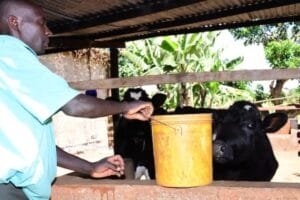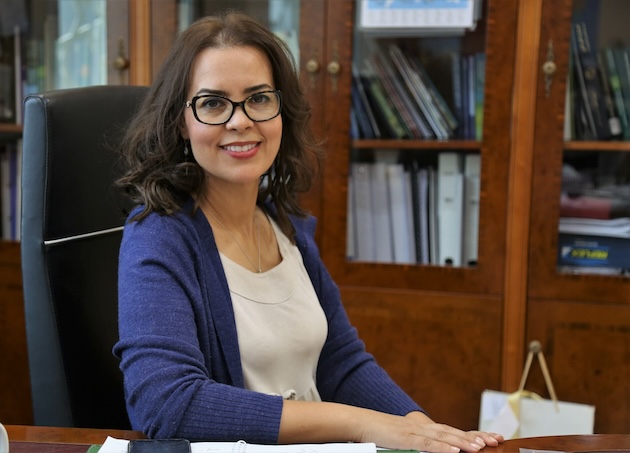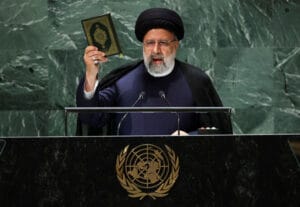
Civil Society, Crime & Justice, Featured, Gender, Gender Violence, Headlines, Human Rights, Middle East & North Africa, Press Freedom, Religion, TerraViva United Nations
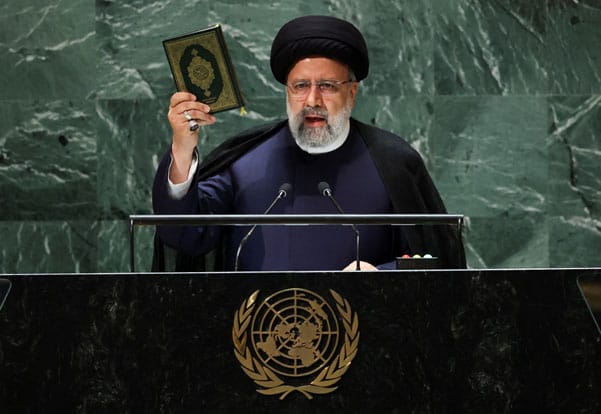
Credit: Mike Segar/Reuters via Gallo Images
– Iran’s time of public rebellion has ended. The protesters marching, chanting, and dancing under the ‘Woman, Life, Freedom’ banner have long stopped. And shifting regional dynamics may play to the regime’s favour.
Protest wave repressed
The wave of protest against the theocratic regime started on 16 September 2022 and lasted far longer than anyone could have predicted. But by the one-year mark it had all but died down, its unprecedented scale and reach superseded by the unparalleled brutality of the crackdown.
The regime murdered hundreds of protesters, injured thousands and arrested tens of thousands. It subjected many to torture, sexual abuse and denial of medical treatment while in detention.
It weaponised the criminal justice system, holding express trials behind closed doors in ‘revolutionary courts’ presided over by clerics, with zero procedural guarantees. It sentenced hundreds – including journalists – to years in jail and handed out several death sentences. According to the UN Special Rapporteur on Iran, some of the human rights violations committed by the regime could constitute crimes against humanity.
Shortly after the first anniversary of the protests, on 6 October, it was announced that the 2023 Nobel Peace Prize had been awarded to Narges Mohammadi, an imprisoned Iranian woman activist with 20 years of struggle for democracy, human rights and women’s rights under her belt. Over the years, she’d been arrested 13 times, sentenced to 31 years in prison and 154 lashes, and been in prison three times. She received the news behind bars.
Ahead of the anniversary, afraid of protests returning, the theocratic regime put back on the streets the morality police whose intervention had resulted in Mahsa Amini’s death. Conservatives proposed a new ‘hijab and chastity’ law that would impose a stricter dress code and harsher penalties for violations.
The reinforcement of morality rules soon claimed its next victim. On 1 October, high school student Armita Garawand was left unconscious, reportedly assaulted by a hijab enforcer for not wearing a headscarf. She remained in a coma for several weeks before dying on 28 October. At her funeral mourners were assaulted and dozens were arrested, including well-known human rights lawyer Nasrin Sotoudeh.
Succession
Battered but unbeaten, the Iranian regime views upcoming legislative elections as part of its road to recovery. On 1 March, people will be called on to vote for all 290 members of the Islamic Consultative Assembly. The key battle will be over turnout, which was already down to 42 per cent in 2020 – the lowest since the 1979 revolution. That record could be shattered, as opposition and reformists call for abstention or boycott.
Along with parliamentary elections, in March Iran will hold elections for the Council of Experts, the body of clerics that appoints Iran’s Supreme Leader. The Council has recently faced criticism for its lax oversight of 84-year-old Supreme Leader Ayatollah Ali Khamenei’s performance, and might have to step in relatively soon.
In power since 1989, Khamenei is in a race against the clock. Bent on ensuring that the theocracy he largely built stands strong after he’s gone, he’s preparing his 54-year-old second son to succeed him. But the ongoing economic crisis may conspire against his plans. The cumulative impacts of international sanctions, fluctuating oil prices, mismanagement and rampant corruption have fuelled inflation and unemployment, and discontent runs high.
To prevent accumulated grievances from translating into mass protest, the regime will likely try to tread a fine line between displaying indestructible power and offering minor concessions.
Regional balance shifts
When the protests erupted international support poured in. People around the world showed solidarity with Iranian women and called on their governments to act. Early on, the USA imposed sanctions on the morality police and several senior leaders of the force and other security agencies. New sanctions by the European Union, UK and USA were announced on the eve of the anniversary of the protests.
On International Women’s Day in 2023, a group of Afghan and Iranian women launched the End Gender Apartheid campaign, which seeks recognition and condemnation of the two regimes as based on gender apartheid. They want the 1973 UN Convention on the Suppression and Punishment of the Crime of Apartheid, which so far applies only to racial hierarchies, extended to gender. The campaign wants this specific and extreme form of exclusion to be codified as a crime under international law so those responsible can be prosecuted and punished.
There was hope that such moves would foster action to hold those responsible to account. Civil society called for the creation of a dedicated accountability mechanism to work alongside the UN Special Rapporteur on Iran.
But on 7 October, as Armita lay in a coma, the paramilitary wings of Hamas launched their attacks into Israeli territory, and global attention shifted to this outrage and Israel’s murderous campaign of revenge. As a key source of support for Hamas, Iran was far from out of the spotlight – but condemnation of theocracy and gender apartheid now took a back seat to geopolitical considerations.
Khamenei publicly stated that Iran wasn’t involved in the 7 October attacks, and although he reiterated Iran’s political and moral support for Hamas, he reportedly told Hamas leader Ismail Haniyeh that Iran wouldn’t directly intervene unless it was attacked by Israel or the USA. But Iran’s leadership of the anti-Israeli and anti-western ‘Axis of Resistance’ and the key role it can play in either expanding or limiting the scope of the conflict means it will be included in any attempt to redefine the regional order, and could well emerge stronger.
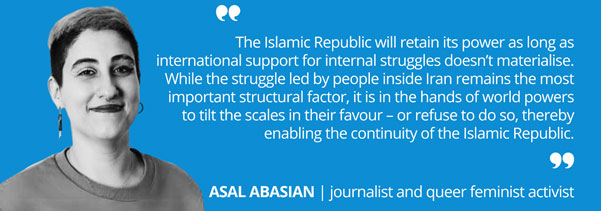
Amid the chaos and in the search for security, the international community might be increasingly willing to look the other way. Iran’s search for international respectability saw a milestone in November, when it took advantage of other states’ lack of interest to claim the chair of the UN Human Rights Council’s Social Forum. The result was a largely empty room – but it remains the case that Iran succeeded in occupying institutional space to whitewash its blood-soaked image.
This mustn’t be allowed to happen. Iranian women mustn’t be left to their own devices. Iranian pro-democracy and human rights activists, both inside and outside Iran, need the support of the international community if they’re to have any chance.
Inés M. Pousadela is CIVICUS Senior Research Specialist, co-director and writer for CIVICUS Lens and co-author of the State of Civil Society Report.

